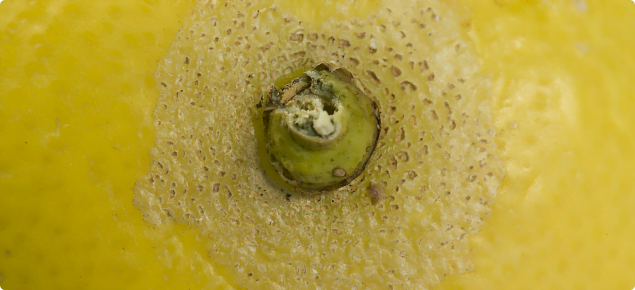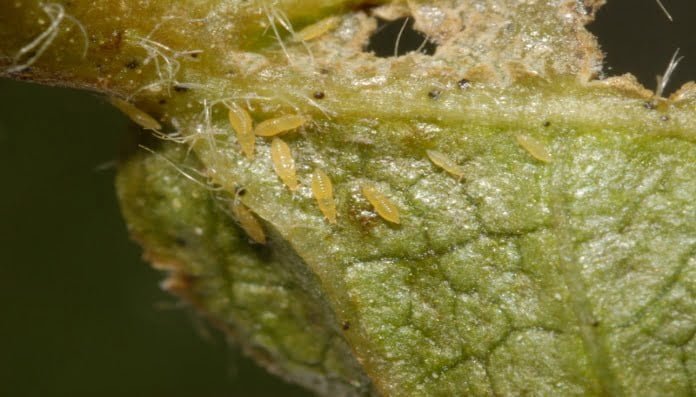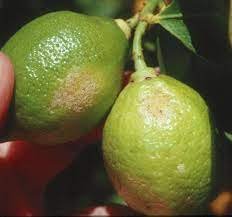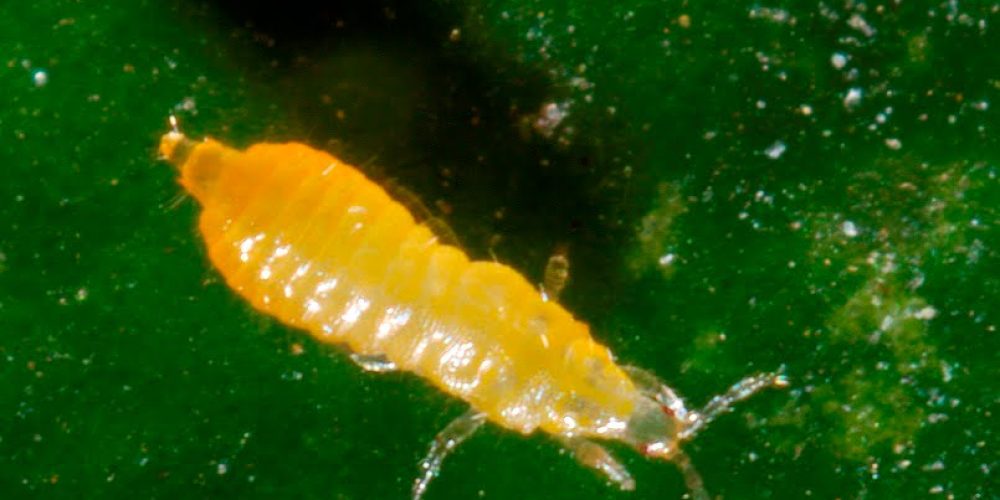Table of contents of the article
ToggleLemon thrips are a pest that affects lemon trees and causes damage to leaves and fruits. This article from the “WORLD OF PLANTS” website provides an explanation of the symptoms of infection and effective prevention and control methods.
Causes of lemon thrips
- Disease name: lemon thrips
- The scientific name: Thysanoptera
- Type of disease: thrips insect
- Disease family: Thrips
The thrips insect attacks lemon plants. Females lay approximately 250 eggs in the tissues of new leaves and buds. The small larvae grow into adults with an orange-yellow color and fringed wings.
Symptoms of lemon thrips
Adult larvae and thrips attack immature lemon fruits, puncturing the peel of the fruit and leaving gray or silvery scars on the peel. The lesion extends into a visible ring of torn tissue.

Lemon thrips disease development cycle
Thrips mainly attack young leaves and young fruit, as they feed on tree sap. Adult thrips lay their eggs in the fall. The overwintering eggs hatch in March, around the time of spring growth, where they feed on new leaves and fruit. The first instar larvae are very small. While second instar larvae are approximately adult size, spindle-shaped and wingless.

Conditions suitable for the spread of lemon thrips
Thrips do not develop at temperatures below 14°C, and what distinguishes thrips is that they can produce 8 to 12 generations during the year if climatic conditions are suitable. Thrips continue to grow and are most noticeable during hot, dry weather when the tree is already under moisture stress.
Losses resulting from the spread of lemon thrips disease
The fruit is considered more susceptible to damage, especially when it is on the outer surface. The fruit's pulp and juice properties may not be affected, but it becomes unmarketable due to damage to the fruit's peel.

Controlling lemon thrips disease
- Spray the tree with an insecticide containing abamectin and cyfluthrin.
- Keep the tree well watered.
- Ensure that predatory species, such as spiders, do not attack thrips through the use of insecticides.
Preventive measures lemon thrips disease
- Plant more resistant varieties.
- Using sticky traps over a large area in the field.
- Ensure that predatory species, such as spiders, do not attack thrips through the use of insecticides.
- Control weeds and damaged ones.
- Good irrigation of the plant.
- Avoid excessive use of nitrogen fertilizers.
In conclusion, we would like to note that we, at the world of plants website, offer you all the necessary services in the world of plants, we provide all farmers and those interested in plants with three main services::-
- Artificial intelligence consulting service to help you identify diseases that affect plants and how to deal with them.
- Blog about plants, plant diseases and care of various crops ... You are currently browsing one of her articles right now.
- An application that provides agricultural consultations to clients, as well as a service for imaging diseases and knowing their treatment for free – Click to download the Android version from Google Play Store، Click to download the IOS version from the Apple App Store.
Sources:
Citrus thrips - plantix
Pests in Gardens and Landscapes – Agriculture and Natural Resources, University of California
Thrips in citrus -Government of Western Australia
Citrus Insects & Diseases – treehelp




